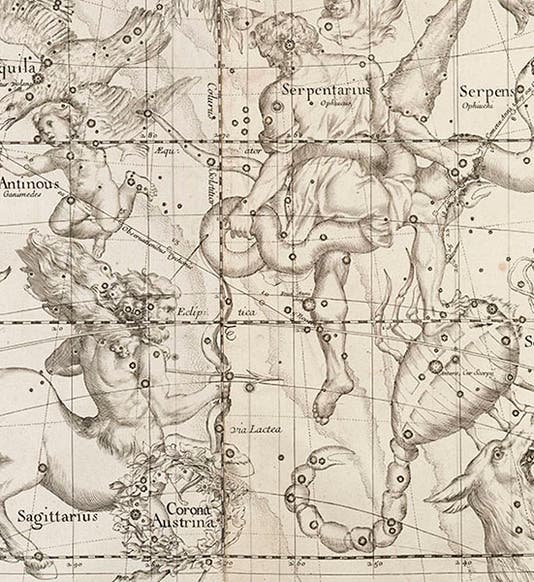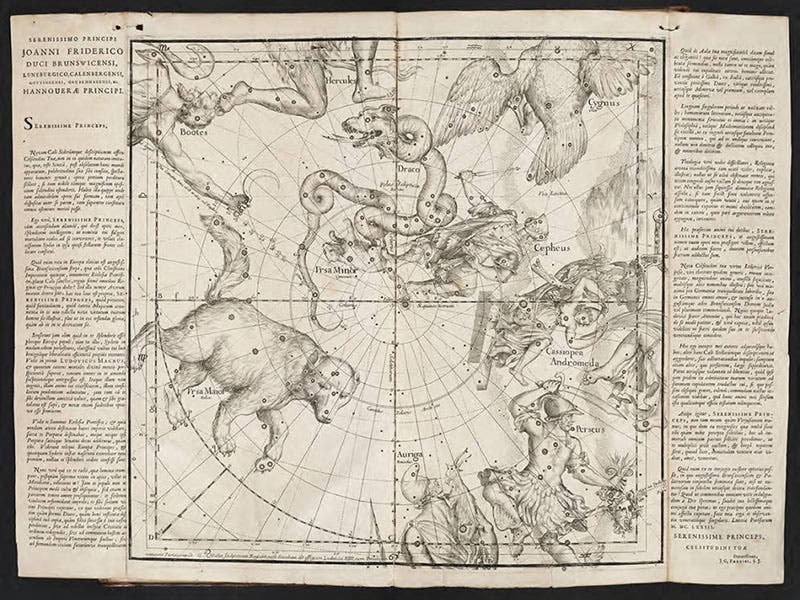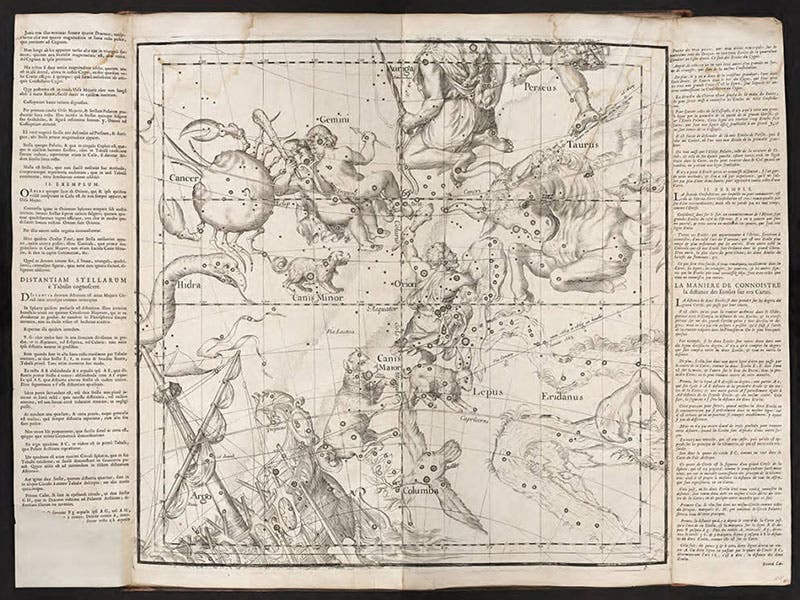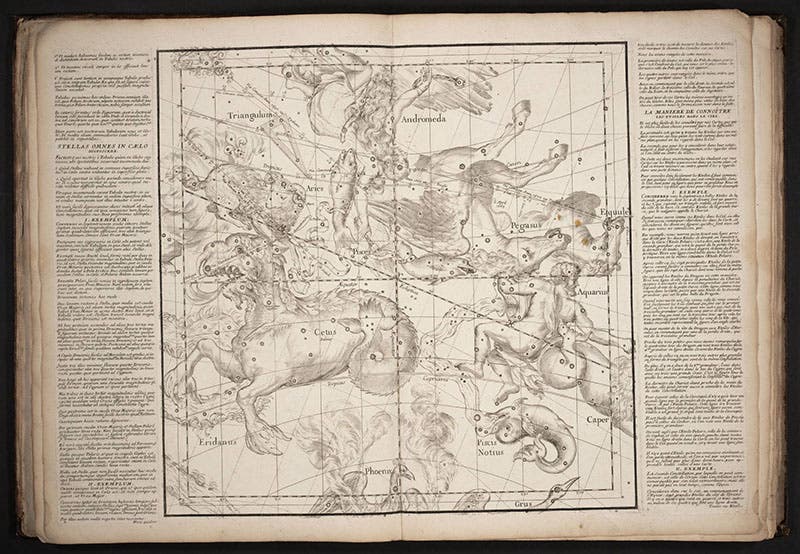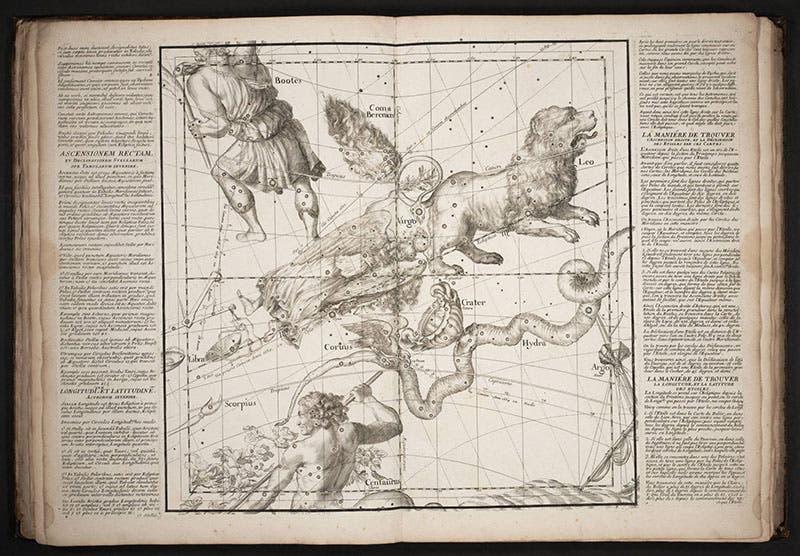Scientist of the Day - Ignace-Gaston Pardies
Ignace-Gaston Pardies, a French Jesuit physical scientist, was born Sep. 5, 1636. Pardies appears most often in historical narratives as an insightful critic of Newton’s early experiments on light, and as one of the earliest proponents of a wave theory of light. He was a fairly prolific writer, and we have 11 works in all by Pardies in our collections. Two of those are star atlases, or rather, two editions of his one star atlas.
Pardies’ star atlas is very rarely mentioned in discussions of Pardies or in studies of celestial cartography, which we find perplexing, for not only is his Globi coelestis his most impressive achievement, it is also one of the most pleasing and harmonious star atlases ever published. Nothing is known about how he compiled it, or whose observations he used, or who drew the constellation figures, but the resulting set of six plates is visually very appealing. The constellation figures are attractive and graceful, based on those of Johann Bayer, and they esthetically fit well with one another on the large plates, which is not at all the case with most star atlases of this type.
The Globi coelestis was first published by his colleagues in 1674, the year after his early death, and it was reprinted around 1690, with the addition of the paths of several recent comets, including that of the comet of 1682, or Halley’s comet. Each edition of the Globi coelestis is quite scarce, and we are fortunate to have fine copies of each. We displayed both the 1674 edition and the 1690 edition in our 2007 exhibition, Out of This World.
The first three images above are from the 1674 edition, and the last three are from the 1690 edition. Note the beautiful composition of each plate, integrating a variety of constellation figures. In the last image, which is a detail of the fifth image, you can see a line labelled “via cometae 1682” crossing the legs of Bootes, marking the path of comet Halley in that year.
Dr. William B. Ashworth, Jr., Consultant for the History of Science, Linda Hall Library and Associate Professor, Department of History, University of Missouri-Kansas City. Comments or corrections are welcome; please direct to ashworthw@umkc.edu.

